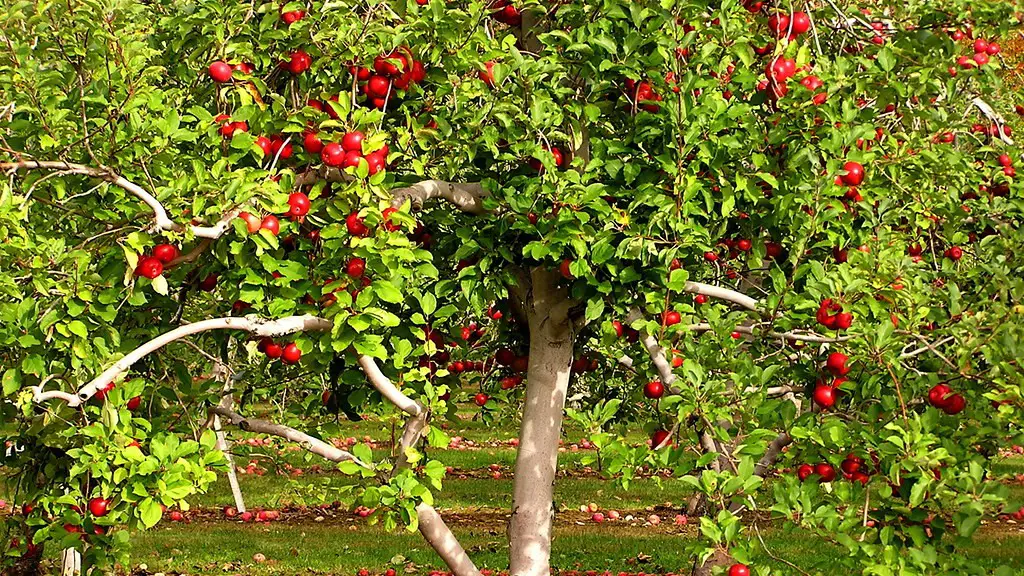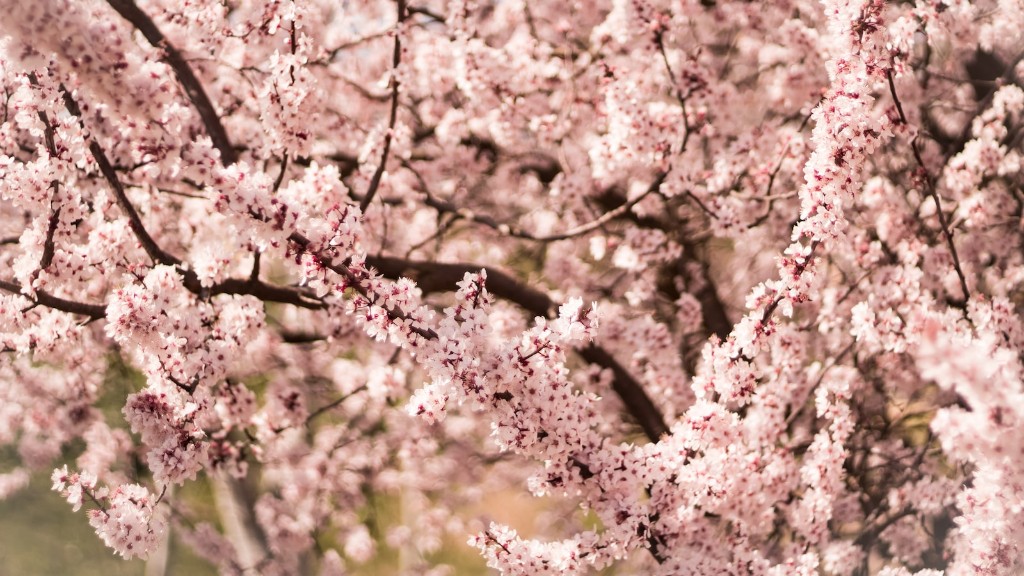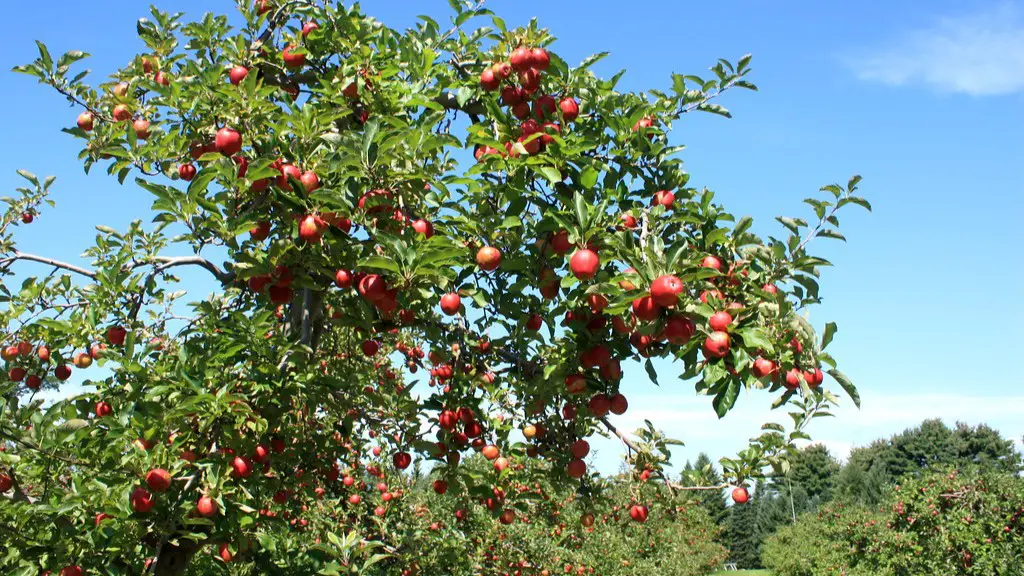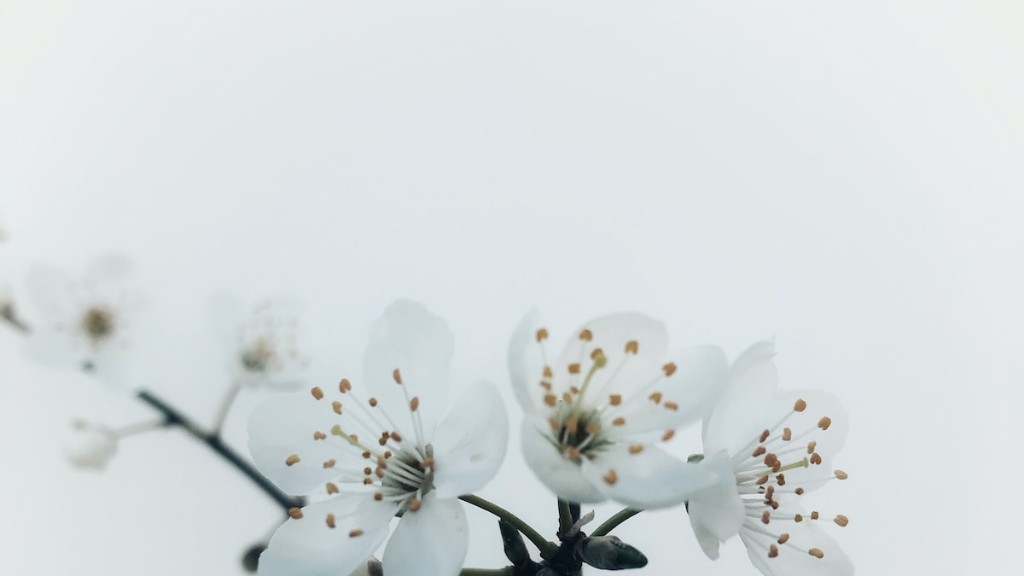Apple tree leaves can be affected by various environmental factors and diseases. When the leaves start to curl up, it is important to identify the cause in order to take the right measures. In this blog post, we will explain why leaves on apple trees curl up and what can be done to prevent it.
Apple tree leaves curl up when they are exposed to extreme temperatures and either receive too much or too little moisture. The leaves curl up as a form of protection against the environment when the conditions become too extreme. It is a reaction of the apple tree to defend itself against further damage to the leaves. In some cases, the cause of curling can be attributed to a disease such as scab.
When curling is caused by environmental conditions, implementing preventative measures is the best way to ensure the health of the apple tree. If the tree is exposed to high levels of sunlight it is necessary to ensure that sufficient water and shade are provided. Additionally, it is important to prune the apple tree in order to ensure that there is ample air circulation and that the leaves do not hang too low. This will help to moderate the temperature and reduce the risk of scorching from the sun.
It is also important to make sure that the tree is receiving the right amount of water. During the summer months, when the trees are under water stress, it is important to keep the soil moist. This can be done through regular irrigation. On the other hand, too much water can lead to root rot or other fungal problems, so it is necessary to ensure that the soil is not oversaturated.
Finally, it is important to ensure that the apple tree is getting the required nutrients from the soil. Lack of nutrients, such as nitrogen and potassium, can cause leaves to curl. In this case, it is necessary to apply fertilizer to provide the necessary nutrients. It is also important to make sure that the fertilizer is applied at the right time of the year, as applying it too early or too late can cause further harm.
Disease
In some cases, the cause of curling can be attributed to certain diseases. Apple scab is a common disease which can cause curling and a range of other issues related to the leaves. Apple scab is caused by a fungal pathogen which attacks the leaves and fruit of the apple tree. This disease can cause rotting and discoloration of the leaves and should be treated as soon as possible. It is important to identify the signs of scab early in order to control the spread of the disease.
Various methods of treatment can be used for apple scab. A fungicide can be applied to the tree in order to prevent further spread of the disease. Additionally, pruning off infected leaves can help to reduce the spread of the fungus. Furthermore, adjusting environmental factors can aid in the prevention of scab. Increasing air circulation and ensuring that the tree is kept at damp, but not wet conditions, can help to reduce the risk of disease.
Finally, selecting the right cultivar is important in the battle against apple scab. Certain cultivars, such as those with thicker foliage and higher levels of fungicide tolerance, can be more resistant to scab and other diseases. Therefore, selecting a cultivar that is suitable to the conditions is important in order to reduce the risk of diseases.
Insects
In addition to diseases, certain insects can also cause leaves to curl. Aphids, mites, and sawflies are all common pests which can cause leaves to curl. These insects feed on the leaves and sap of the apple tree, and their presence can cause significant damage to the tree. It is important to take measures to control these pests as soon as possible in order to minimize damage.
Control of insect pests can be achieved through chemical treatments or manual removal. It is important to identify the exact species of insect which is causing the curling in order to ensure that the appropriate treatment is used. Chemical treatments should only be used when absolutely necessary, as they can cause further damage to the tree. Alternatively, manual removal of the pests can be done in some cases. This involves careful inspection of the leaves and removal of any pests present.
In order to prevent pests from attacking the tree, it is important to create the right conditions. This includes keeping the tree clean of debris, using pest barriers, and using insecticidal sprays on a regular basis. Additionally, encouraging beneficial insects, such as ladybugs, can help to keep the pests under control. These beneficial insects feed on the harmful pests and help to keep the tree healthy.
Finally, it is also important to practice good sanitation. This includes disposing of any fallen leaves, fruits, or branches as soon as possible. Removing these materials from the area can help to prevent insects from infesting the tree. Additionally, it is important to inspect the tree regularly for signs of infestation in order to take immediate action when necessary.
Nutrition
In addition to environmental and insect factors, nutritional deficiencies can also cause leaves to curl. When the apple tree does not receive the necessary nutrients from the soil, it can affect the health of the tree. Nitrogen and potassium are two of the most important nutrients for an apple tree and a lack of either can cause leaves to curl.
In order to ensure that the apple tree receives the right amount of nutrients, a soil test should be conducted. This will provide information about the nutrient content of the soil and help to identify if there are any deficiencies that need to be addressed. If the test reveals that the soil is lacking in nutrients, it is necessary to apply fertilizer in order to replenish the soil.
Organic fertilizers are preferred over chemical fertilizers as they provide a more sustainable source of nutrients. Additionally, they are less likely to over-fertilize and cause further harm to the tree. It is important to ensure that the fertilizer is applied at the right time of the year, as applying it too early or too late can cause further harm.
Finally, it is important to observe the tree in order to identify if the lack of nutrients is causing any other issues. Additionally, it is necessary to ensure that the nutrients applied are actually being absorbed by the tree. If the soil test reveals that the nutrients are not being absorbed, it is possible that the soil is too compact or too acidic and adjustments may need to be made.
Temperature
Extreme temperatures can also cause leaves to curl up on an apple tree. If the temperature drops too low, the leaves can be damaged by frost and cause them to curl. In this case, it is possible to prevent damage by protecting the tree with a frost cloth during the winter months.
On the other hand, extreme heat can also cause leaves to curl. If the trees are exposed to excessive amounts of heat, the leaves will curl up as a form of protection. In this case, it is important to provide adequate protection for the tree. This includes providing plenty of shade and making sure that the trees are receiving enough water.
In addition, it is important to prune the tree in order to ensure that there is ample air circulation and to keep the leaves from hanging too low. This will help to reduce the temperature and reduce the risk of scorching from the sun. Additionally, it is important to select a cultivar which is suitable for the local climate and plant the tree in well-draining soil in order to reduce the risk of damage from extreme temperatures.
Finally, it is also important to use mulch around the tree in order to maintain a cool and moist environment. This can help to reduce the temperature and help to keep the tree healthy. Additionally, it is also important to ensure that the mulch does not pile up too high as this can create a breeding ground for pests.



